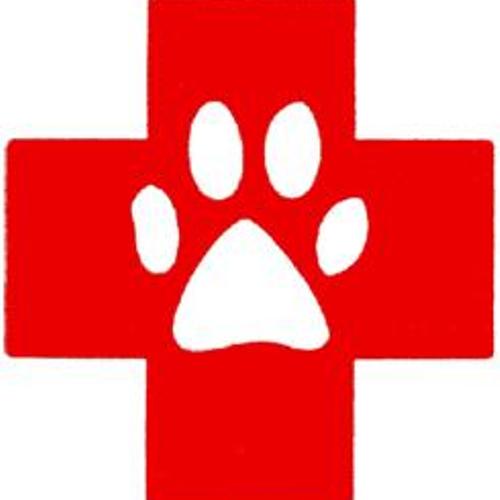Thyroid Disorders
By: Dr Lise Hansen
A quick overview
Hypothyroidism is the most common endocrine disorder of dogs, and up to 90% of cases result from an autoimmune disease that progressively destroys the thyroid gland over a period of 12-18 months (autoimmune thyroiditis). Because this form of thyroid disease is heritable, it has significant genetic implications for breeding stock. Once more than 70% of the gland is destroyed by this process, classical clinical signs of hypothyroidism appear (weight gain, hair loss and skin disease, recurring infections and cold intolerance). Accurate diagnosis of the early stages of thyroid dysfunction and autoimmune thyroiditis offers important genetic and clinical options for prompt intervention and case management.
Although thyroid dysfunction is the most frequently recognized endocrine disorder of pet animals, it is often difficult to make a definitive diagnosis. As the thyroid gland regulates metabolism of all body cellular functions, reduced thyroid function can produce a wide range of clinical and behavioral manifestations. Many of these clinical signs mimic those resulting from other causes and so recognition of the condition and interpretation of thyroid function tests can be problematic.
An association between aberrant behavior and thyroid dysfunction has been documented in dogs, akin to the parallel situation in people. Typical clinical signs include: unprovoked aggression towards other animals and/or people (especially children), sudden onset of seizure disorder in adulthood, disorientation, moodiness, erratic temperament, periods of hyperactivity, hypo-attentiveness, depression, fearfulness and phobias, anxiety, submissiveness, passivity, compulsiveness, and irritability. After episodes, most of the animals appear to come out of a trance like state, and are unaware of their bizarre behavior
Diagnostic thyroid profiles
Veterinarians commonly are confused about which tests are necessary to accurately diagnose thyroid dysfunction in the dog and cat. They may assume that the reference ranges provided by veterinary laboratories are finite and apply to all breeds and breed types, when toy and small breeds have higher basal thyroid levels, and large or giant breeds and sighthounds have lower basal levels. Further, age and physiological circumstances play a role too. For example, veterinarians are generally unaware that the thyroid reference ranges on laboratory reports pertain to adults, and not to very young, adolescent (higher basal levels) or geriatric animals (lower basal levels). These reference ranges are intended as general guidelines and may not apply to those that are athletic performers; under general anesthesia; undergoing sex hormonal change; pregnant or nursing mothers; obese, ill or recovering from illness, or taking specific drugs that might have some influence on thyroid function (e.g. corticosteroids, phenobarbital, potentiated sulfonamides, dietary soy and soy phytoestrogens, insulin, narcotic analgesics, salicylates, tricyclic antidepressants, furosemide, phenylbutazone)
Daily diurnal rhythm fluctuations and the presence of circulating thyroid autoantibodies also change basal thyroid levels. However, knowledge of these variables that affect thyroid function and circulating levels of thyroid hormones does not preclude their measurement. It is especially frustrating when a veterinarian tells the client that thyroid profiles cannot be measured accurately because the patient is receiving drugs such as corticosteroids or anticonvulsants. As long as the effects of these drugs are taken into account, there is no reason to avoid measuring thyroid function, especially when thyroid dysfunction may be an important underlying component of the patient’s clinical problem.
While diagnosing thyroid dysfunction in companion animals can be particularly frustrating, especially when used for wellness screening of potential breeding stock, veterinarians may fail to appreciate that a simple total T4 test is usually nondiagnostic. In fact, the in-office testing of T4 has recently been shown to produce unreliable results in 52% of dogs and 62% of cats, and therefore should not be used even as a general diagnostic screening test. Complete thyroid profiling is the most accurate and correct way to diagnose thyroid dysfunction when coupled with clinical information about the animal.
A complete baseline thyroid profile is measured and typically includes total T4, total T3, free T4, free T3, and should include the TgAA (thyroglobulin autoantibody). The TgAA assay is especially important in screening breeding stock for heritable autoimmune thyroid disease. The cTSH (thyroid stimulating hormone) assay may also be included, although this test in dogs is poorly predictive of thyroid dysfunction compared to the parallel assay in people, because the dog has a more active alternate thyroid regulatory pathway through growth hormone.
The normal reference ranges for thyroid analytes of healthy adult animals tend to be similar for most breeds of dogs and mixed breeds. Exceptions are the sighthound and giant breed types of dogs which have lower basal levels. Similarly, because young animals are still growing and adolescents are maturing, optimal thyroid levels are expected to be in the upper half of the references ranges. For geriatric animals, basal metabolism is usually slowing down, and so optimal thyroid levels are likely to be closer to midrange or even slightly lower.
Management and treatment
Regarding treatment of thyroid disease, the most common confusion is whether the therapy should be given once or twice daily. In the dog, thyroid medication is best given twice daily, even though the label directions which have been the same for many years may indicate once daily dosing. The reason that twice daily dosing is needed is to match the 12-16 hours physiological half-life of thyroxine in the dog.
The second important point is that thyroxine binds to calcium or soy in foods, so this medication should always be given at least an hour before or three hours after any food or treat containing calcium or soy to ensure absorption. Some drug labels state it can be given with meals; this is incorrect. Physicians know this but it is rarely taught to veterinarians. Monitoring of thyroid therapy should be performed at 4-6 hours post dose, and at that time the T4 and free T4 values should be in the upper third to 25% above the laboratory’s normal reference range. If treatment is stopped, retesting the patient should wait for at least 6 weeks to allow the pituitary-thyroid axis to return to its basal capacity before therapy was given.
This health article was written by Honey's Real Dog Food
Honey’s Real Dog Food are one of the longest-established raw dog food producers in the world.
Contact:
Tel: 01672 620 260
Email:
Website: www.honeysrealdogfood.com


